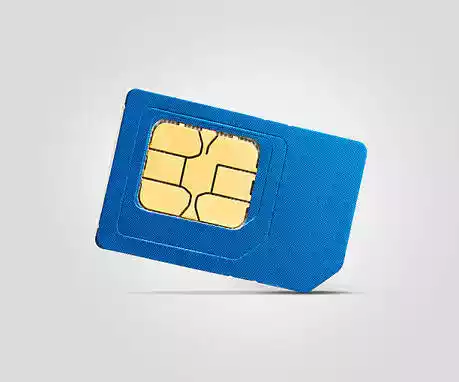What is the Function of a SIM Card in a GSM Phone?
When we think about mobile phones, we often focus on their sleek designs, advanced features, and high-resolution displays.
However, beneath the surface, the humble SIM card plays a critical role in enabling these devices to function as they do.
Table of Contents
Understanding the Basics of SIM Cards
A SIM card is a small, removable card that is inserted into a GSM (Global System for Mobile Communications) phone.

GSM is the most widely used mobile network technology, powering a large portion of the world’s mobile devices.
How SIM Cards Work
At its core, a SIM card functions as a unique identifier for a subscriber within the GSM network. It holds essential information, such as the subscriber’s phone number, network authorization data, and security keys.
Authentication and Security
One of the primary functions of a SIM card is to ensure the security and authenticity of a mobile device on the network.
When you turn on your phone, the SIM card communicates with the network, providing the necessary credentials for authentication.
Storing Contact Information
In addition to its role in network authentication, a SIM card also serves as a storage unit for contact information.
It allows you to save phone numbers, names, and other details, ensuring you don’t lose your important contacts even if you switch phones.
Roaming Capabilities
SIM cards enable you to roam on other compatible networks when you travel internationally.
By inserting a local SIM card, you can avoid high roaming charges and enjoy local rates for calls, texts, and data.
Switching Devices Made Easy
Upgrading to a new phone is a breeze with a SIM card. Simply remove it from your old device and insert it into the new one.
Your phone number and contacts remain intact, streamlining the transition process.
Managing Mobile Plans
SIM cards also play a role in managing mobile plans. They can store information about your plan, such as available minutes, texts, and data usage.
This allows the network to provide accurate billing and usage details.
SIM Card Sizes and Compatibility
Over the years, SIM cards have evolved in size, from standard to micro and nano SIMs. Modern smartphones typically use nano SIMs.

Image credit: Wikipedia
Compatibility is crucial, as a SIM card must fit your device’s SIM card slot.
SIM Cards vs. eSIM: What’s the Difference?
The emergence of eSIM technology has brought new possibilities. Unlike physical SIM cards, eSIMs are embedded in the device and can be remotely activated and reprogrammed.
This eliminates the need for swapping physical cards when changing carriers.
Common Issues and Troubleshooting
Occasionally, SIM cards encounter issues like poor connectivity or unrecognized cards.
Troubleshooting tips include:
- Cleaning the contacts,
- Restarting the device,
- Or contacting your carrier for support.
Wrap Up
In conclusion, the SIM card is a tiny yet indispensable component of GSM phones. It not only ensures secure communication but also facilitates roaming, contact storage, and device switching.
As we move into an era of ever-advancing technology, the role of the SIM card remains pivotal in our connected lives.
FAQs
- What does GSM stand for? GSM stands for “Global System for Mobile Communications,” a standard technology for mobile networks.
- Can I use a SIM card from one GSM phone in another? Yes, you can usually transfer a SIM card from one GSM phone to another as long as they use the same size of SIM card.
- How do eSIM cards differ from traditional SIM cards? Unlike traditional SIM cards, eSIMs are embedded in the device and can be remotely programmed without the need for a physical card.
- What should I do if my SIM card gets lost or stolen? If your SIM card is lost or stolen, contact your mobile carrier immediately to report it and get a replacement.
- Are there any health risks associated with using SIM cards? No, SIM cards emit very low levels of radiation and are not considered a health risk. They are safe for everyday use.




